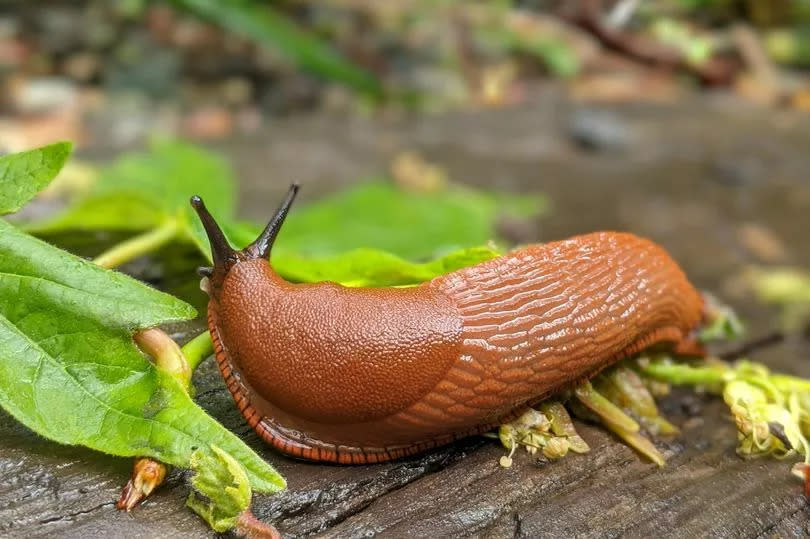Specialist says there are five humane ways to stop slugs and snails 'wreaking havoc' in your garden

As we're into May and the humidity slowly starts to creep up, so do the chances of slugs and snails infesting your garden. Between March and June, the slow-moving, slimy creates are much more likely to be prominent, wreaking havoc on your plants by feasting on them, often at night when you’re none the wiser.
During the day, they will hide in dark, cool places to shelter, only coming out at night to feed focusing their sights on foliage and new, tender roots. Their rapid reproduction rate - adult snails lay up to 100 eggs every month – only amplifies the chances of infestation, meaning it’s important to get on top of the issue as soon as possible.
Sustainable pest prevention specialists at Pelsis detail their top five tips for humanely dealing with slugs and snails during peak infestation season.
Copper tape
Adding copper tape to the top of plant pots is an easy first step in deterring slugs and snails. The copper deters the pests by giving them a very small electrostatic shock, which although won’t cause them any serious harm or long-term damage, will be enough to stop them from attacking your plants.
In terms of aesthetics, this is an exceptionally subtle solution as the tape is the same colour as most plant pots and will therefore go largely unnoticed. The robust nature of the copper tape not only ensures its durability, but also allows it to withstand the elements.
Barrier pellets
Green Protect’s eco-friendly, chemical-free barrier pellets are a quick and effective solution for keeping slugs and snails at bay. Simply place them around the plant's stem to form a physical barrier, which will make it difficult for pests to get through.
While Green Protect’s pellets are a completely humane repellent, last year saw the ban of widely used metaldehyde pellets, which were deemed a huge danger to birds and other mammals following years of campaigning from various groups.
Strategic plant choices
Choosing plant varieties that are less appealing to slugs and snails is a smart way to avoid future infestations. Shift away from plants such as hostas, which are widely regarded as one of the plants' gardeners always have the biggest problem with infestations. Opt for more resilient alternatives, such as aquilegia or foxgloves.
Placing alternative food sources near plants
Scattering alternative food sources around your plants will distract slugs and snails from feasting on them. Orange peels (or any other citrus fruits) and cucumber slices are perfect examples of foods you can use to divert their attention, buying you time to get to them before they get to your plants.
Creating an environment for natural enemies
Cultivating an environment friendly to natural predators like hedgehogs, toads, frogs and ground beetles is a surefire way to deter any slimy pests. Installing a pond, wild niches (twigs, logs, dead plants etc.), dry stone walls, hedges or shrubs will also help attract wildlife to your garden and keep slugs/snails well away from your prized plants.
John Stewart, from the technical team at Pelsis, said: “Slugs can wreak havoc in any garden, particularly to hostas, bedding plants and vegetables. With the ban on conventional slug pellets, gardeners are seeking safer, friendlier methods to deter these slimy critters.
“ Green Protect Slug & Snail Barrier Pellets are a safe option as they are entirely chemical-free and act purely as a deterrent, so don’t cause any harm. Alternatively, a garden with biodiversity is a healthy one, so attracting other garden-friendly creatures can also act as a slug defence. Hedgehogs, toads, frogs and ground beetles are natural predators, so creating inviting environments for them to thrive in will certainly keep slugs at bay.”

 Yahoo News
Yahoo News 
